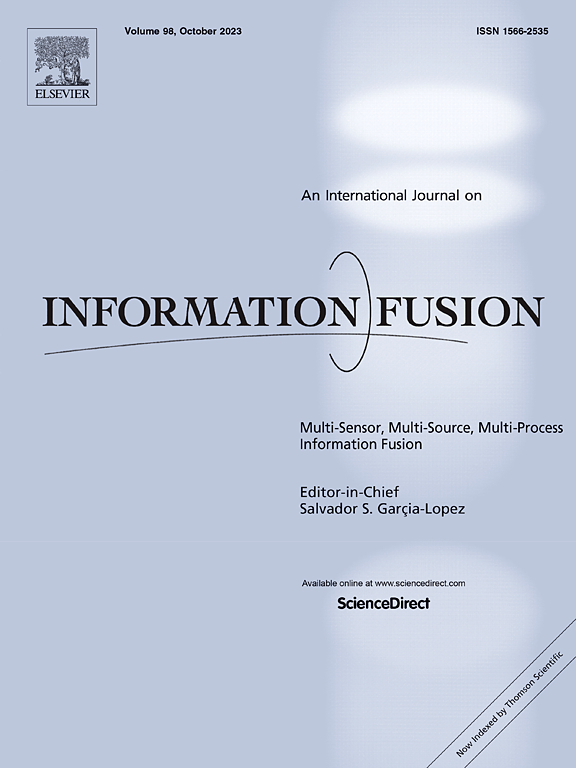A survey on data fusion approaches in IoT-based smart cities: Smart applications, taxonomies, challenges, and future research directions
IF 14.7
1区 计算机科学
Q1 COMPUTER SCIENCE, ARTIFICIAL INTELLIGENCE
引用次数: 0
Abstract
Rapidly increasing urbanization leads to the need for more comfortable and reliable living spaces. The smart city paradigm needs to be renewed daily to provide smarter solutions to citizens’ needs and problems and ensure sustainable living. The Internet of Things is one of the most widely used smart city methodologies. The Internet of Things (IoT) aims to enable objects in the physical world and cyberspace to communicate. IoT technology produces a very large amount of raw and generally heterogeneous data. Data fusion techniques are gaining popularity to manage this large amount of data. With data fusion methods, smarter structures can be built from this raw data to reduce data size, optimize traffic, and extract useful information. This study provides a comprehensive perspective and opportunities for different areas of IoT applications of smart city systems. In addition to providing a detailed taxonomy framework for data fusion levels in various criteria, the seven-layer IoT architecture implemented in smart cities is discussed. Finally, the paper concludes by mentioning the difficulties encountered in applying data fusion methods, proposing solutions to these difficulties, and presenting future work trends based on the studies conducted.
基于物联网的智慧城市数据融合方法综述:智能应用、分类、挑战与未来研究方向
快速增长的城市化导致对更舒适可靠的生活空间的需求。智慧城市模式需要每天更新,为市民的需求和问题提供更智能的解决方案,并确保可持续的生活。物联网是应用最广泛的智慧城市方法之一。物联网(IoT)旨在使物理世界和网络空间中的物体能够进行通信。物联网技术产生了大量的原始数据,通常是异构数据。数据融合技术在管理大量数据方面越来越受欢迎。使用数据融合方法,可以从这些原始数据构建更智能的结构,以减少数据大小、优化流量并提取有用的信息。本研究为智慧城市系统物联网应用的不同领域提供了一个全面的视角和机会。除了为各种标准的数据融合级别提供详细的分类框架外,还讨论了在智慧城市中实施的七层物联网架构。最后,本文总结了数据融合方法在应用中遇到的困难,提出了解决这些困难的方法,并在研究的基础上提出了未来的工作趋势。
本文章由计算机程序翻译,如有差异,请以英文原文为准。
求助全文
约1分钟内获得全文
求助全文
来源期刊

Information Fusion
工程技术-计算机:理论方法
CiteScore
33.20
自引率
4.30%
发文量
161
审稿时长
7.9 months
期刊介绍:
Information Fusion serves as a central platform for showcasing advancements in multi-sensor, multi-source, multi-process information fusion, fostering collaboration among diverse disciplines driving its progress. It is the leading outlet for sharing research and development in this field, focusing on architectures, algorithms, and applications. Papers dealing with fundamental theoretical analyses as well as those demonstrating their application to real-world problems will be welcome.
 求助内容:
求助内容: 应助结果提醒方式:
应助结果提醒方式:


